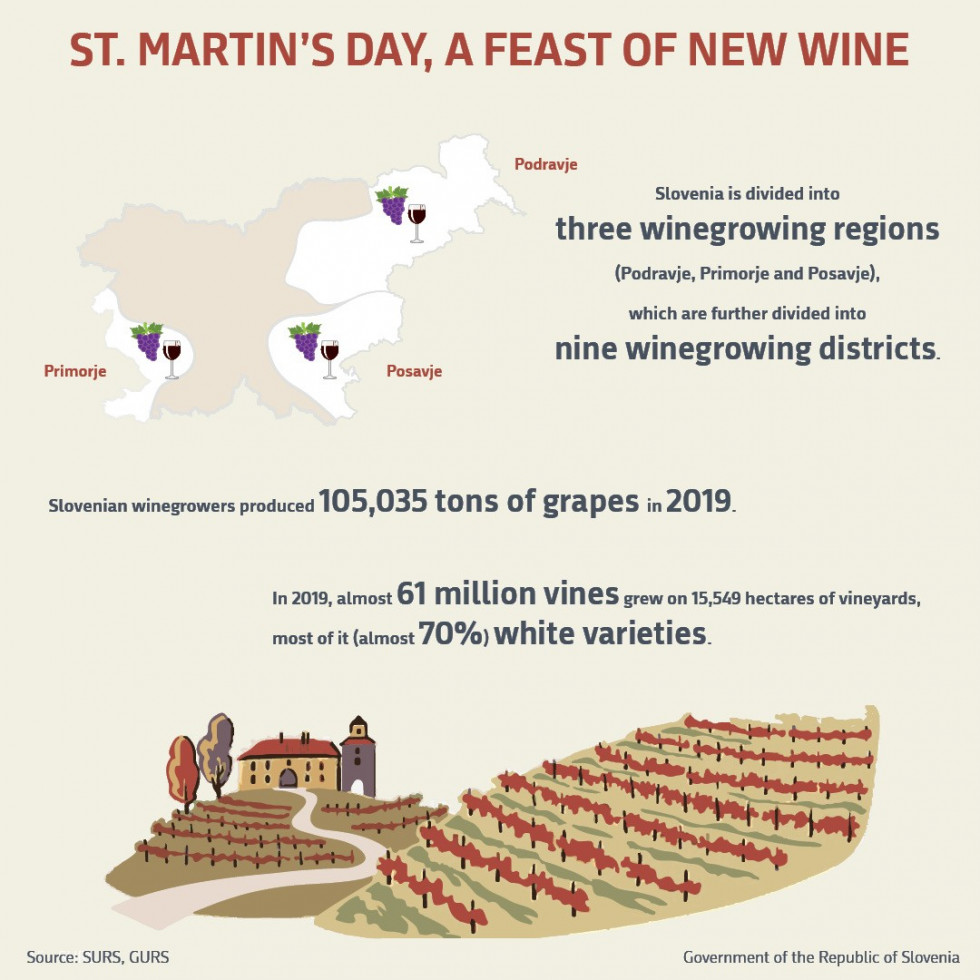St Martin's Day – Wine Festival
On this day, a feast is laid out with goose, "mlinci" (a type of flatbread), red cabbage and an indispensable glass of young and delicious wine. The streets of Slovenia's towns resound with folk songs and merry laughter, dancers in folk costumes swirl around, the smell of St Martin's delicacies lingers in the air and Martinmas traditions are practised in many places.
Slovenia has two other wine festivals: St Urban's, when the vines are in bloom and winegrowers get the first sense of the year's harvest, is celebrated on 25 May, while 27 December, St John's day, is when the wine is stabilised and blessed.
In Slovenia, St Martin is the patron saint of new wine – on his name day, must turns into wine. In the past, this was the day when the harvest was completed, the previous year's accounts settled and new goals set. Today the celebration of St Martin's day is an opportunity for socialising and entertainment.
Martinmas has roots in paganism, when people thanked the gods for a good harvest at the end of a fertile year and asked for a new year that was just as fertile.
Traditions related to this holiday are still preserved in some parts of Slovenia. Must can be blessed only by a man dressed up as a bishop, St Martin or a priest. Farmers make rounds in vineyards and perform rituals. In some parts they lay an apple spiked with herbs, most commonly cloves and cinnamon, on a barrel and say the words: "Now let's see what the harvest will be like." If the apple dries up, the harvest will be good, if it rots, the harvest will be bad.
Also food is an indispensable part of the Martinmas celebration. The most typical feast combination is a roast goose or duck stuffed with chestnuts or apples, with "mlinci" and red cabbage as side dishes. This, of course, is no coincidence. According to the legend, St Martin tried to avoid being appointed bishop, pagans would sacrifice a goose or a duck, while autumn is the time of picking grapes and chestnuts.


